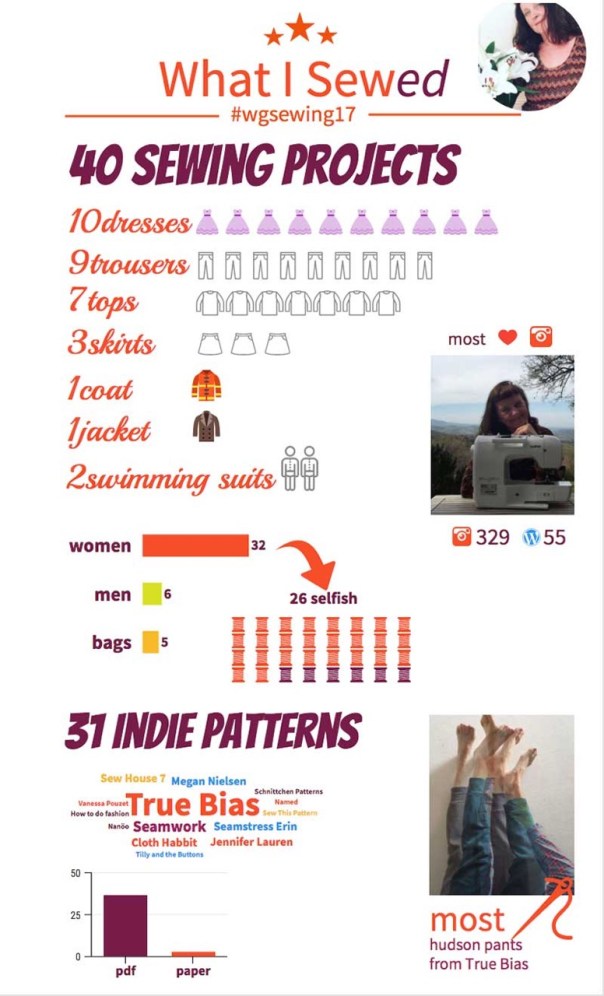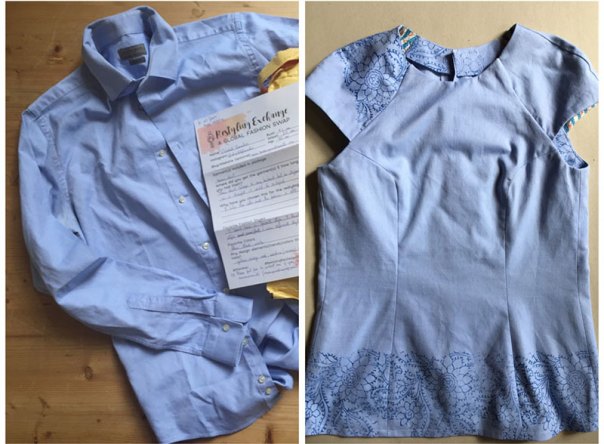Sometimes a pattern just falls on your head! I blame @robinsnest1926 😉 . When she posted her first Kingfisher Top on Instagram I immediately wanted to sew one myself. The pattern ticked several of my boxes: the combination of a woven fabric with knit bindings, a deep neck, a loosely—but not too wide— fit and raglan sleeves. I love raglan sleeves!
So, I bought and downloaded the Kingfisher Top immediately. Alas, actually starting to sew the top took longer than expected.
The Kingfisher Top pattern
The Kingfisher Top is a pattern from the New Zealand indie pattern company The Sewing Revival. It was the first time I heard from them and I was pleasantly surprised by their offer of patterns in their webshop. So, I also bought the Tui Dress, since it was the beginning of September and still very warm. Optimistically, I thought I would still have enough time to sew that too!

I ordered the pattern on a weekend and I wanted to start sewing immediately so I printed the pattern tiles and glued them together. The marks on the pattern tiles were clear so this was a quick job.
The Kingfisher Top pattern consists of 3 basic pieces: the front, back, and the sleeves. Then there are the pieces for the neckband and the sleeve cuffs, both for the short and the 3/4 version. I like that you don’t have to draft the bindings yourself.
Based on the measurements on the size chart, I cut out the XL and didn’t make any adjustments. Although I like the fit, next time I maybe will grade down a size on the shoulder-arm part.

The Fabric
I bought this Italian silk at my favourite fabric stall at the market in Castel del Piano. It was a remnant so I had no other option than to make the top with short sleeves.
For the contrasting fabric, I used this black rib with bronze sparkles I still had in my stash. I used it for my second Juniper cardigan.

The sewing process
The sewing of the Kingfisher Top went smoothly without hiccups. The Sewing Revival gives it a 4/10 on the easy score and that’s a fair score.
The instructions are extensive with photos and illustrations. Not so much for me but very useful for a beginning sewist. This top came together in about two hours. First, I sewed all the seams on the overlocker. Then I machine basted (stitch length 5) the neckband and the cuffs and also finished them with the overlocker.

Conclusion
I think it’s obvious that I am happy with my Kingfisher Top. It’s a joy to sew and a joy to wear. I particularly love the feel and the drape of the silk. And I am lucky that we are now having these extremely sunny days here so I can wear it a lot!
Will I sew some more of this top. I guess you already know the answer. So thank you @robinsnest1926 for showing me the Kingfisher Top.














































 The Juniper Cardigan comes in two views: a cropped one and a long-line. Just like the Laneway Dress, the pdf-pattern has a print shop version. This is always a bonus for me. A minor thing for the A0 print: there is no possibility to select only one of the versions to print. I only want to sew the cropped version but now I have also a print of the long version.
The Juniper Cardigan comes in two views: a cropped one and a long-line. Just like the Laneway Dress, the pdf-pattern has a print shop version. This is always a bonus for me. A minor thing for the A0 print: there is no possibility to select only one of the versions to print. I only want to sew the cropped version but now I have also a print of the long version.












 Here I am standing in front of a work of Ilya & Emilia Kabakov in
Here I am standing in front of a work of Ilya & Emilia Kabakov in  At the Palazzo Comunale, San Gimignano.
At the Palazzo Comunale, San Gimignano.
 It doesn’t show that the closure isn’t properly finished, does it?
It doesn’t show that the closure isn’t properly finished, does it?




